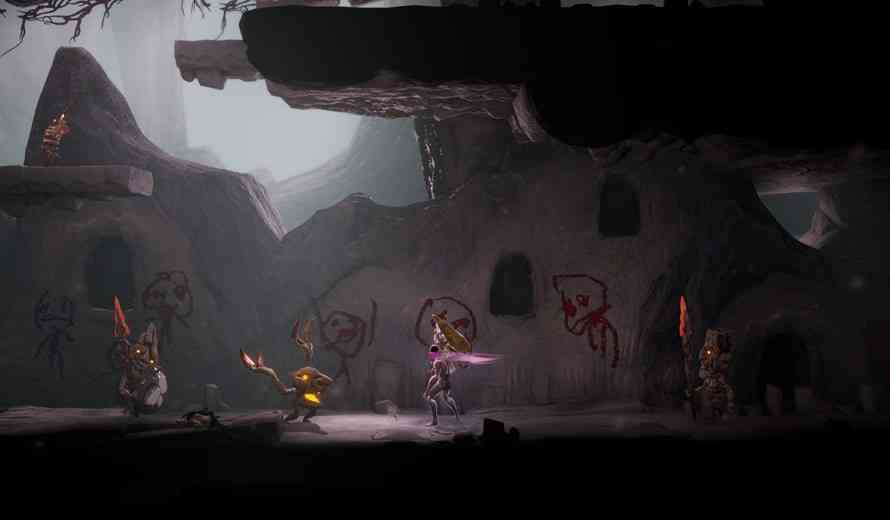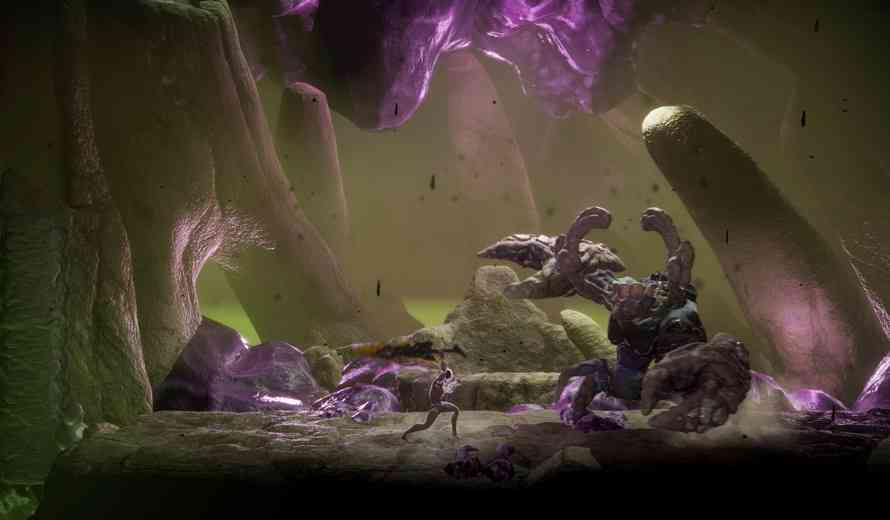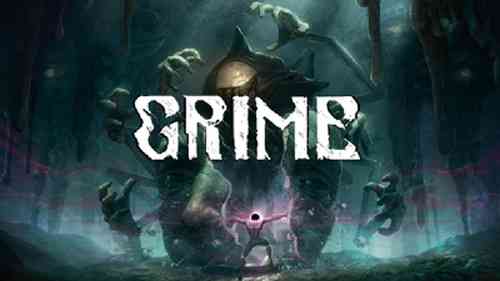Grime Review
Soulslike has been a genre long enough now that we all know what it means. We can argue about the particulars but it usually suggests action RPGs with a specific style of precise, timing-based combat that’s unforgiving of mistakes, coupled with stamina management and a reliance on the player developing skills and upgrading weapons, armor, and abilities in place of a difficulty slider.
Grime is a 2D Soulslike ARPG, or Metroidvania…whatever you want to label it, the game checks all the important boxes of the genre. The combat is challenging, the story is intensely opaque, and the settings, enemies, and bosses are surreal and imaginative. Grime plays variations on many From Software themes, adding complexity to the mechanics and occasionally, paying a more obvious homage to the Dark Souls trilogy.
When it comes to the player character, Grime makes explicit the idea of life as an existential, soul-sucking force that derives meaning from consuming other living beings. The player literally has a swirling black hole for a head, and an important game mechanic is a timing-based move that replaces the familiar parry and riposte in Dark Souls. Get it right and you absorb healing breath energy from the enemy. Miss the timing and you leave yourself open to a stun or attack. Absorbing souls from enough examples of a specific enemy allows you to access special abilities based on that foe. Beating bosses also gives you new and useful skills like being able to teleport around the map.

Those are interesting ideas with one flaw, which is that the soul-parry — or whatever you want to call it — can be maddeningly difficult to time, and it is the only way to unlock those abilities. Many bosses can only be defeated through judicious use of the mechanic, so just like learning to parry was critically important in Dark Souls, this is something you’ll need to practice.
Another bullet point on the Grime box is that all the weapons are essentially organic and come from the bones, spines, claws, teeth and pincers of enemies and bosses. You have a fast light attack and a slower heavy attack or special, which sometimes adds interesting moves like chewing on the enemy or sending them flying. There are a wide range of weapons that favor the standard RPG approaches–dex weapons, strength weapons, slow and heavy, light and fast–and eventually you’ll unlock an NPC that can upgrade them if you have the appropriate materials.
Pace Yourself
For the rest of its mechanical core, Grime sticks pretty closely to traditional ARPGs in this genre, so you can probably guess that managing stamina will be critically important, you’ll be able to roll out of the way, jump when needed and you’ll find or unlock lots of weapons and armor. You’ll have a number of consumables to help you in combat. I appreciated that Grime didn’t try to reinvent every wheel because knowing the shorthand of the genre helps in the early hours, always a challenge in Soulslike games.

Salvador Dali, Please Meet Dark Souls
Grime has a very particular, surrealistic art style that is often haunting and melancholic, made more so by the excellent musical score by Alex Roe, who wrote the cinematic and boss battle music, and Sean Secca, who created the ambient tracks that underscore the rest of the game. Grime can be surprisingly colorful, with enemies that look like the spawn of a Salvador Dali painting crossed with Easter Island statues. Aside from music, which often recalls the musical feel of the Dark Souls scores, sound design in Grime is pretty spare. Neither the varied organic-looking environments, NPCs or enemies make much noise.
Although Grime in many ways is a standout action game, it has a few frustrating and disappointing elements as well. While a faceless main character might be a powerful visual metaphor, it creates a barrier to relating to, or caring much about what’s going on in the already very cryptic story. The entire experience of playing Grime, in fact, begins to feel like a rather detached and bloodless experience, despite its sometimes engaging enemies and unique environments. The mysterious theme of a godlike humanoid figure in a world of animate stone is unsettling and intellectually engaging, but not especially emotionally resonant. Defeating bosses engenders the relief of figuring out tricky puzzles more than making the player feel like a skillful badass as it so often does in Dark Souls.

Ultimately, Grime is an overall successful transposition of the 2D Soulslike subgenre into a new and engaging world. Although it lacks the emotional richness of the best Souls games, Grime’s striking environments, solid combat, imaginative enemies and original mechanics all work together in harmony, and it clearly establishes a formula that is open to refinement and possibility.
***PC code provided by the publisher for review***
The Good
Classic Soulslike mechanics
Inventive world and enemies
Effective music
Satisfying combat
The Bad
Obtuse narrative without a clear sense of momentum
Some repetition in boss design
Difficulty spikes
Some mechanics overly complex

